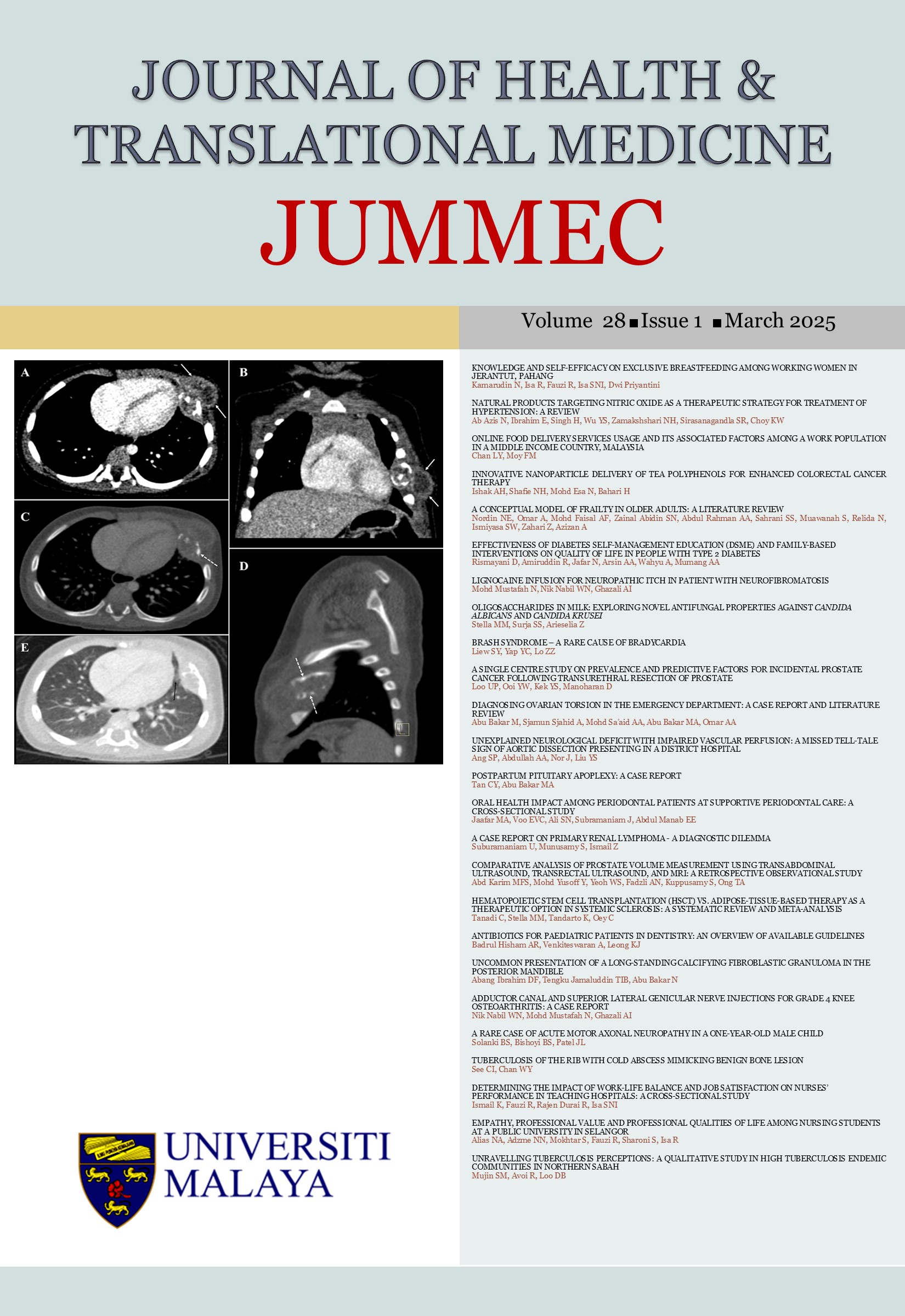A CONCEPTUAL MODEL OF FRAILTY IN OLDER ADULTS: A LITERATURE REVIEW
Received 2024-01-28; Accepted 2024-06-06; Published 2025-01-02
DOI:
https://doi.org/10.22452/jummec.vol28no1.5Abstract
This review employed several key procedures to synthesize the current evidence on frailty. An extensive literature search was conducted across major databases to identify relevant studies on frailty definitions, epidemiology, assessment tools, interventions, and conceptual models. The search results were analyzed using bibliometric techniques including thematic mapping with Biblioshiny and co-occurrence network visualization with VOSviewer. These bibliometric analyses identified core research themes, emerging topic clusters, and connections across the frailty literature. The main findings highlighted frailty's multidimensional nature spanning physical, cognitive, psychological, and social domains. While the frailty phenotype by Fried et al. (2) provided an initial operational definition, subsequent models increasingly encompassed a broader biopsychosocial frailty construct. Globally, over 10% of community-dwelling older adults were estimated as frail, with rates exceeding 40% in those over 90 years old. Frailty was associated with numerous adverse outcomes like disability, falls, hospitalization and mortality. Current assessment approaches included the frailty phenotype, frailty index, and various clinical performance tests, though no single comprehensive tool existed. Evidence supported tailoring multimodal interventions combining physical, nutritional, cognitive, psychological and social strategies to individual risk profiles. The principal conclusion was the critical need for a unified, holistic conceptual model elucidating the complex interplay of factors driving frailty's development and progression. Integrating the findings, a biopsychosocial framework was proposed conceptualizing frailty as a multifactorial health state arising from the cumulative impact of interconnected physical, cognitive, psychological, social and environmental determinants over the life course. Such models are essential for advancing frailty science, shaping clinical practices, and informing policies to promote healthy, resilient aging amid rapidly aging populations worldwide.
Downloads
Downloads
Published
Issue
Section
License
All authors agree that the article, if editorially accepted for publication, shall be licensed under the Creative Commons Attribution License 4.0 to allow others to freely access, copy and use research provided the author is correctly attributed, unless otherwise stated. All articles are available online without charge or other barriers to access. However, anyone wishing to reproduce large quantities of an article (250+) should inform the publisher. Any opinion expressed in the articles are those of the authors and do not reflect that of the University of Malaya, 50603 Kuala Lumpur, Malaysia.


